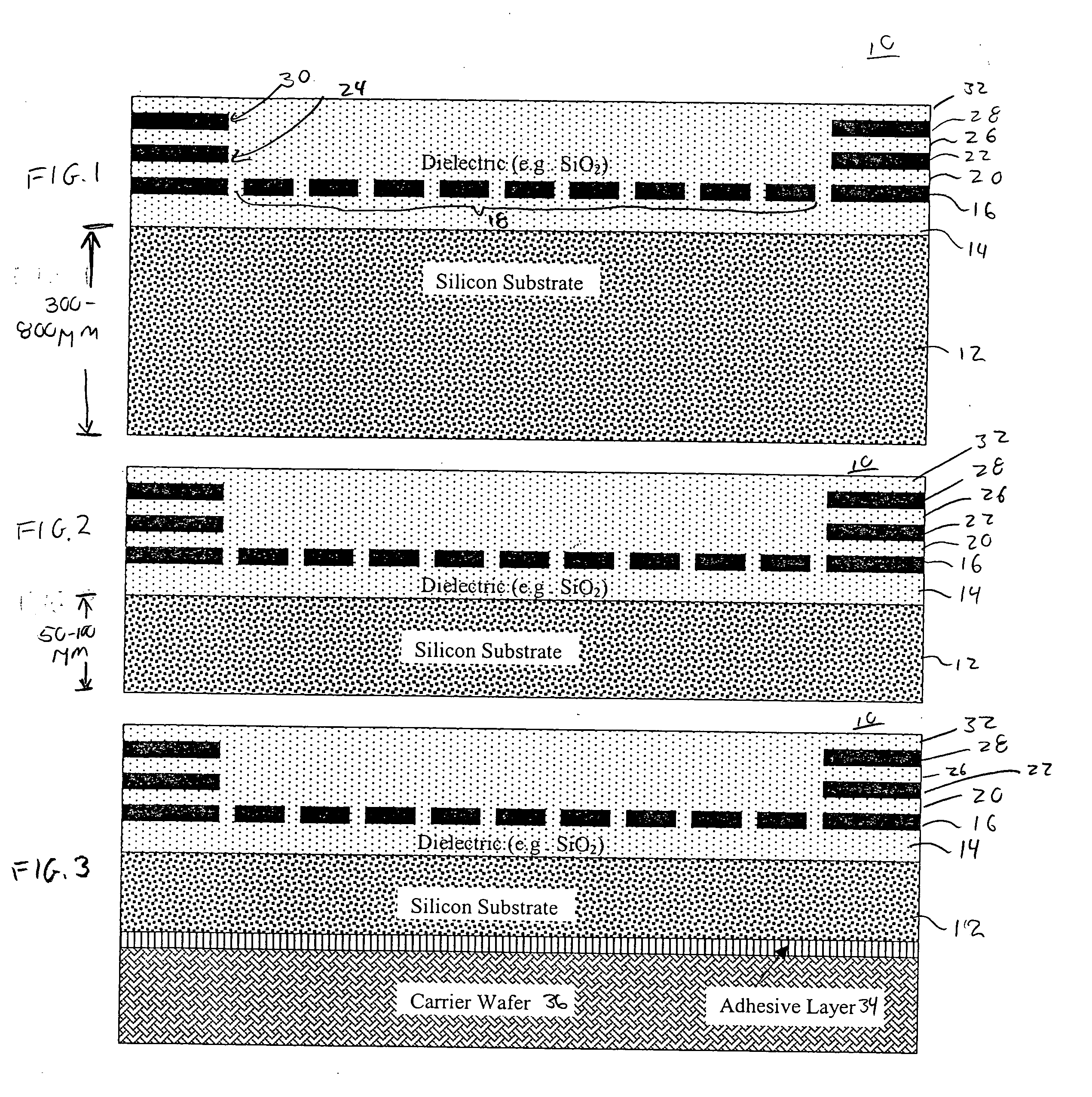Ultrathin form factor MEMS microphones and microspeakers
a technology of micro-electromechanical systems and microphones, applied in the field of processing techniques for forming ultra-thin devices, can solve the problems of slow venting formation and small vent diameter, and achieve the effect of reducing the thickness of the substra
- Summary
- Abstract
- Description
- Claims
- Application Information
AI Technical Summary
Benefits of technology
Problems solved by technology
Method used
Image
Examples
Embodiment Construction
[0050] A first embodiment of the present disclosure is illustrated in conjuction with FIGS. 1-9. In FIG. 1, a wafer 10 (a portion of which is seen in FIG. 1) is received from a CMOS foundry. Those of ordinary skill in the art will recognize the wafer carries a plurality of devices, one of which is shown in FIG. 1. At the CMOS foundry, a silicon substrate 12 has been processed so as to form alternating layers of, for example, a dielectric material and a metal. The wafer 10 illustrated in FIG. 1 has a first layer of dielectric material 14 carrying a first metal layer 16. The first metal layer 16 has been patterned such that a portion thereof forms a micro-machined mesh 18. Formed on the first metal layer 16 is a second layer of dielectric 20. The second layer of dielectric 20 carries a second metal layer 22 which has been patterned to have an opening 24 formed therein. The second metal layer 22 carries a third layer of dielectric 26. The third layer of dielectric 26 carries a third la...
PUM
 Login to View More
Login to View More Abstract
Description
Claims
Application Information
 Login to View More
Login to View More - R&D
- Intellectual Property
- Life Sciences
- Materials
- Tech Scout
- Unparalleled Data Quality
- Higher Quality Content
- 60% Fewer Hallucinations
Browse by: Latest US Patents, China's latest patents, Technical Efficacy Thesaurus, Application Domain, Technology Topic, Popular Technical Reports.
© 2025 PatSnap. All rights reserved.Legal|Privacy policy|Modern Slavery Act Transparency Statement|Sitemap|About US| Contact US: help@patsnap.com



